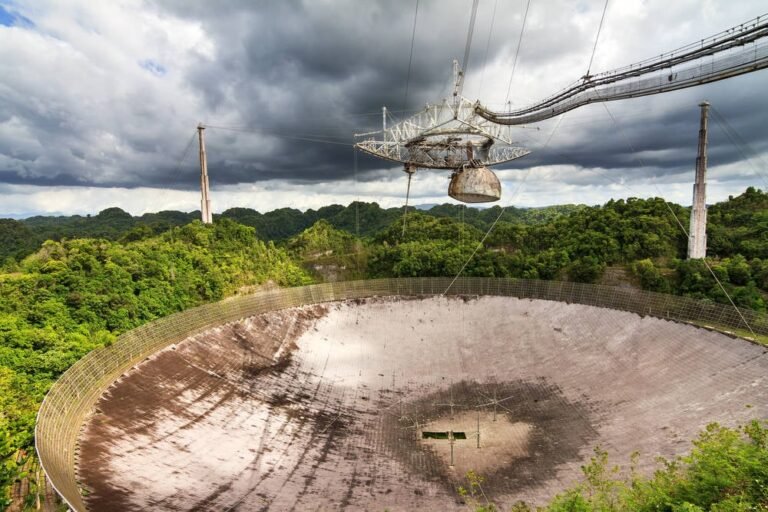News
The crumple of the 305-meter telescope at Arecibo Observatory in 2020 is being attributed to zinc plod – uninteresting deformation because of emphasize – in the telescope’s cable spelter sockets, per a committee legend from the National Academies of Sciences, Engineering, and Medication.
This fabricate might also have been accelerated by the fabricate of low-stage electric unusual on the structure of zinc – a phenomenon identified as electroplasticity.
In-constructed 1963, the iconic Puerto Rico-essentially based entirely mostly telescope used to be the greatest single-aperture instrument on the earth till 2016 – when it used to be surpassed by China’s 5-hundred-meter Aperture Spherical Telescope (FAST, or Tianyan). It contributed to plenty of scientific discoveries, similar to discovering the first identified binary pulsar.
When Storm Maria struck Puerto Rico in 2017, the telescope used to be broken, but it surely remained operational till 2020 when a supporting cable broke from its socket and fell across the critical dish. Restore efforts in November 2020 failed, and the National Science Foundation (NSF) made up our minds to ruin the structure.
In its location, the NSF plans to birth a science training facility next year: the NSF Arecibo Middle for Culturally Relevant and Inclusive Science Education, Computational Skills, and Neighborhood Engagement (NSF Arecibo C3).
The committee legend confirms prior findings by other groups, at the side of NASA engineers, who attributed the failure in a 2021 forensic prognosis to “progressive zinc extrusion on several Arecibo sockets, which in hindsight indicated significant cumulative damage.”
Nonetheless it surely additionally goes beyond prior analyses by proposing a speculation that makes an try to accommodate a number of unanswered questions. For example, why did the telescope sockets and cables fail despite a security element above two – the ratio of cable energy to applied load? And why did these spelter sockets screen accelerated zinc plod when others have now not over a century of socket use?
- Novel Jersey man admits transport sanctions-busting tech to Russia
- Japan’s picket dice-shaped satellite rockets to house
- The hunt is on for the scum who stole Britain’s greatest inflatable planetarium
- Japan’s house company to fabricate a digital twin of its ISS module – magnificent sooner than it retires
The National Academies investigators hypothesize that the failure used to be hastened by exposure to electromagnetic radiation.
“The only hypothesis the committee could develop that provides a plausible but unprovable answer to all these questions and the observed socket failure pattern is that the zinc socket creep was unexpectedly accelerated by the Arecibo Telescope’s unique powerful electromagnetic radiation environment.”
Prior reports, the committee wrote, failed to adequately address the cited questions. And the investigators have known as for added complete forensic prognosis of socket quality and zinc plod.
“A potential mechanism for spelter socket zinc creep acceleration not considered in other analyses was the effect of low-current electroplasticity (LEP),” the legend asserts. “The cables whose sockets failed were suspended in a unique and powerful radio telescope environment, capable of inducing current in the cables at some level. Electric current flowing through zinc has been found to increase its creep rate but under laboratory conditions [that were] significantly different than the spelter socket service in the Arecibo Telescope.”
Present recordsdata on zinc electroplasticity, per the legend, comes from experiments appealing elevated unusual over mighty less time. So further work desires to be completed on low-unusual, long-term electroplasticity. The legend additionally makes a amount of recommendations about how such projects might maybe additionally be made safer with extra funding and further diligent oversight and upkeep.
“The US National Science Foundation is grateful to the National Academy of Sciences for their thorough review of the circumstances resulting in the collapse of the 305-meter telescope at the Arecibo Observatory,” an NSF spokesperson suggested The Register. “We welcome the opportunity to consider their findings and how we can incorporate their recommendations in the future.” ®
